
Rhomborhina is a genus of large scarab beetles described by Hope in 1837. They are members of the subfamily Cetoniinae. They mostly live in East and South Asia. The name is frequently misspelled as Rhomborrhina following an unjustified change by Hermann Burmeister in 1842.

The Trichiini are a tribe of the scarab beetle family (Scarabaeidae), though historically they were often classified as a subfamily, Trichiinae. In Europe, the conspicuous bee beetles (Trichius) are probably the best-known genus of the tribe.

Flower chafers are a group of scarab beetles comprising the subfamily Cetoniinae. Many species are diurnal and visit flowers for pollen and nectar, or to browse on the petals. Some species also feed on fruit. The group is also called fruit and flower chafers, flower beetles and flower scarabs. There are around 4,000 species, many of them still undescribed.

The pygora beetles or flower beetles are scarab beetles of the genus Pygora. They are native to Madagascar.
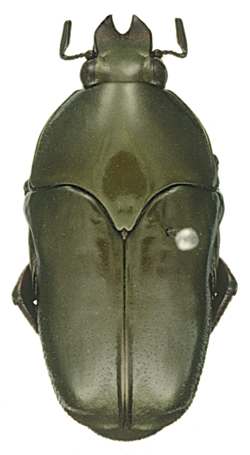
Ischiopsopha are beetles from the subfamily Cetoniinae, tribe Schizorhinini. The genus was created by Raffaello Gestro in 1874. The type species of the genus is Cetonia bifasciata Quoy & Gaimard, 1824. These cetoniids have only the tip of the scutellum visible. The genus is widespread throughout the whole Australian region.

Pachnoda is a genus of beetles from the subfamily Cetoniinae with nearly all of the species living in Africa. The limit of the genus is given by the presence of internal lobes in their aedeagi.

Lomaptera are beetles from the subfamily Cetoniinae, tribe Schizorhinini. The genus was created by Gory & Percheron, in 1833. The type species of the genus is Cetonia papua Guérin-Méneville, 1830. These cetoniids have the tip of the scutellum invisible, which makes the difference with the genus Ischiopsopha.
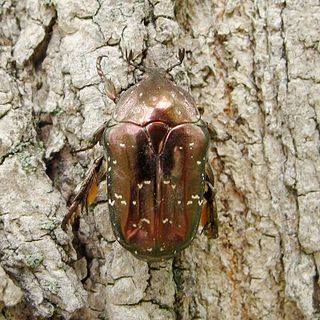
Protaetia is a genus of beetles of the family Scarabaeidae, occurring primarily in Asia, and containing over 300 species.

Gnathocera is a genus of beetles belonging to the family Scarabaeidae.

Euselates is a genus of beetle belonging to the family Scarabaeidae and tribe Taenioderini.
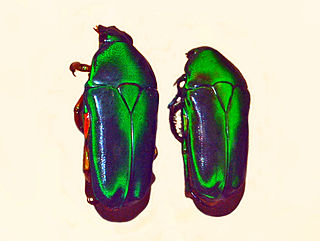
Tmesorrhina is a genus of beetles belonging to the family Scarabaeidae, subfamily Cetoniinae.

Gymnetis is a genus of beetles of the family Scarabaeidae and subfamily Cetoniinae.

Coilodera is a genus of beetles belonging to the family Scarabaeidae, subfamily Cetoniinae.

Clinteria is a genus of scarab beetles in the subfamily Cetoniinae found in Asia. The genus is characterized by the scutellum fused with the pronotum.

Hoplopyga is a genus of beetles of the family Scarabaeidae. These beetles can be found in Central and South America.
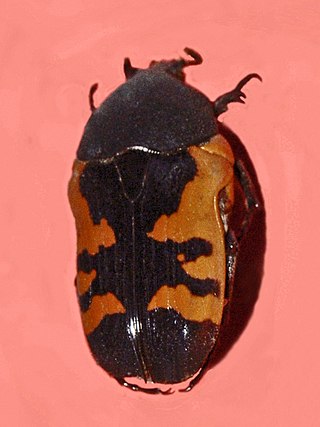
Polybaphes is a genus of fruit and flower chafers belonging to the family Scarabaeidae, subfamily Cetoniinae.

Cremastocheilini is a tribe of scarab beetles in the family Scarabaeidae. There are about 50 genera in the tribe Cremastocheilini.

Cetoniini is a tribe of fruit and flower chafers in the family of beetles known as Scarabaeidae. There are over 80 genera in Cetoniini, found worldwide.
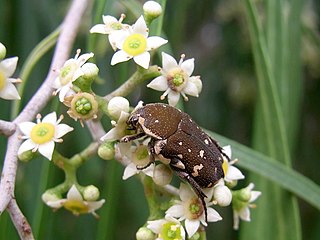
Glycyphana is a genus of beetles in the family Scarabaeidae. There are at least 110 described species in Glycyphana, found in Asia, Australia, and the Pacific Islands.

Campsiura nigripennis, is a species of dung beetle found in India, Sri Lanka, Myanmar, Malaysia, Indonesia, Thailand and Vietnam.






















